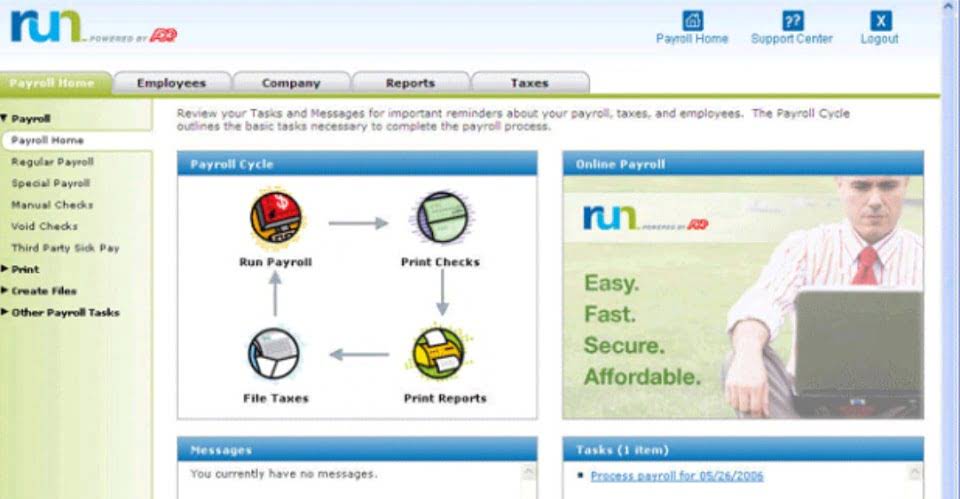Radio Gaushala 93.6 MHz , ८ पटक हेरिएको

When characterizing a grant or similar contract, a nonprofit must evaluate whether the “provider” (the grantor or another party to a contract) receives commensurate value in return for the assets transferred. The impact of remote workforce on state tax nexus is a significant consideration for nonprofits in today’s evolving work landscape. With an increasing number of employees working remotely from various states, organizations must be aware of the potential nexus implications, which could lead to tax obligations. It’s crucial for nonprofits to apply for state-level exemptions when expanding their presence into new states. The Form 990-T, typically filed for organizations Medical Billing Process with unrelated business income, will now encompass these tax credits.
Which nonprofits need to pay attention to new FASB standards and why?
- FASB standards for reporting nonprofit financial statements apply to nonprofit audits.
- The 21% excess compensation excise tax, currently imposed on compensation of more than $1 million paid by nonprofits to their five highest compensated employees, is expanded to apply to all current (and former) employees.
- Unfortunately, that period of time has just about expired for almost all organizations.
- Plus, these contributors have the right to sue your nonprofit for misuse of funds if you don’t respect their official wishes—another way GAAP and legal requirements for nonprofits align.
- Nonprofit organizations must carefully consider the timing of revenue recognition to ensure accurate financial reporting.
- These disclosures offer transparency concerning the financial health of the organization and demonstrate the organization’s commitment to donor-imposed conditions.
IRS tax specialists typically focus on providing clear guidance, conducting thorough reviews of tax returns, and resolving complex tax-related questions. Receive expert tips, financial guidance, and real-world advice—straight delivered to your inbox. You’ll need to spend some time analyzing your lease agreement(s) to get a strong understanding of the lease payment schedule, the term of the lease, and any incentives or options.

Mission vs. Margin: Core Objectives in Accounting for Nonprofit vs For-Profit Organizations

During planning, auditors evaluate risk factors and design procedures tailored to the nonprofit’s operations. Fieldwork involves examining financial records, internal controls, and regulatory compliance. The final audit report provides an opinion on the financial statements, offering assurance to stakeholders. Some nonprofits may also engage in other assurance services, such as reviews or agreed-upon procedures, to address specific online bookkeeping concerns or requirements. Privately held companies should carefully review these updates and assess their impact on their financial reporting processes to ensure compliance and enhance the quality of their financial statements. Publicly traded companies in the United States are required by the Securities and Exchange Commission (SEC) to prepare their financial statements in accordance with GAAP.
- Nonprofit organizations, like for-profit entities, must adhere to Generally Accepted Accounting Principles (GAAP) when preparing their financial statements.
- This is especially valuable for businesses and nonprofits seeking funding, as it provides potential investors and donors with confidence in the accuracy and honesty of reported figures.
- While recent IRS compliance check letters serve as a gentle reminder, organizations can benefit from proactive measures such as reviewing compensation arrangements to preempt potential issues.
- Additionally, most lenders and donors require GAAP-compliant financial statements as a prerequisite for grants, loans, or investment opportunities.
Revisions to OMB’s Uniform Guidance
- For many organizations, failing to make a single filing can result in heavy fines or loss of tax-exempt status altogether.
- Economic forces over the past couple years have driven costs higher, but they’ve also created new opportunities for nonprofits to receive greater yields on their cash.
- If you’re considering upgrading roofing, lighting, or HVAC systems in any of your buildings, connect with your tax advisor to explore this opportunity.
- It’s crucial for nonprofits to apply for state-level exemptions when expanding their presence into new states.
- Shared costs like utilities may be allocated based on rational measures such as square footage usage.
- Our use of the terms “our firm” and “we” and “us” and terms of similar import, denote the alternative practice structure conducted by Smith & Howard PC and Smith & Howard Advisory LLC.
As the lease term progresses, the liability ‘amortizes,’ or slowly decreases in conjunction with the asset. We recommend that you take an inventory of your existing contracts to identify any potential leases that your organization is a party to, but that doesn’t mean that you’ll need to report every lease on your balance sheet. “ASC” stands for Accounting Standards Codification, and 842 represents the section of the FASB guidance covering leases. Economic forces over the GAAP for Nonprofits past couple years have driven costs higher, but they’ve also created new opportunities for nonprofits to receive greater yields on their cash. Yes, the Accounting Standards Codification typically applies to both for-profit and non-profit organizations.
- When recognizing revenue, nonprofits are required to follow these principles to ensure transparency and consistency in financial statements.
- Accounting for-profit organizations focuses on increasing shareholder value, and every financial decision is tied to this end goal.
- For-profit organizations require budgets that empower them to make strategic decisions with capital.
- Conditional promises become recognizable when the conditions are substantially met.

NCN will continue to monitor the impact of the tax bill as it is implemented in communities nationwide, and we will continue to advocate for legislation to bolster the capacity of nonprofit organizations to serve their communities. In addition, under CECL, credit impairment is recognized as an allowance for credit losses, not as a direct write-down of the financial asset. The ASU doesn’t establish a threshold for recognizing an impairment allowance, though, so organizations also must measure expected losses on assets with a low risk of loss. That means trade receivables that are current or not yet due will have an allowance. Neither ASC 842 nor the update define “common control.” The term typically refers to a transaction between two entities that have common ownership or management.

प्रकाशित मिति: २०२३-१०-०४ , समय : १४:२२:१८ , २ वर्ष अगाडि
